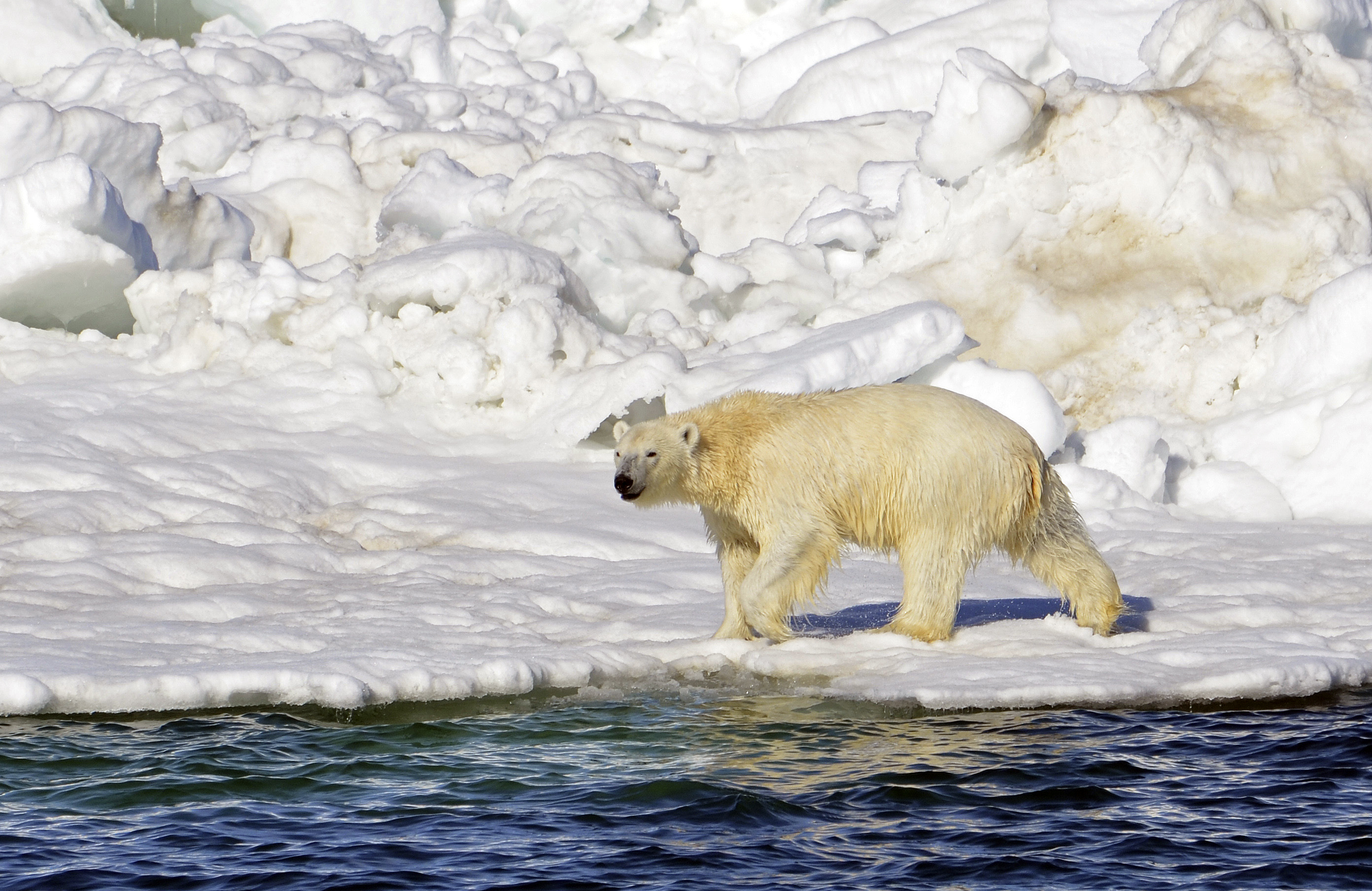Studies paint grim outlook for mammal species

By this point, a single academic paper predicting a sharp decline in polar-bear populations over the next 40 years is, unfortunately, not all that unique. Over the past several years, scientists have warned that late-forming and early-melting sea ice amounts to a profound threat to the survival of the species.
Prior to 2001, polar bears seemed to be doing fine, according to Dag Vongreven, a biologist who leads the polar bear specialist group for the IUCN, an international body that classifies the conservation status of the world’s plants and animal species. Over-hunting, he told The Arctic Journal last year, had been dealt with and populations were looking stable. “But climate change has upset the situation again. Now it is climate change that is the new risk.”
This latest study, reported in Biology Letters, a journal published by Britain’s Royal Society, stands out for two reasons. Firstly, it confirms the polar bear’s ‘vulnerable’ status, as ranked by the standards of the IUCN.
By looking how polar bear populations have declined during the period 1979–2014, the study makes three forecasts for how the species will fare. In the best-case scenario, there is a 70 percent likelihood that populations will decline 30 percent within three of the species’ generations.
[The first Arctic-wide look at polar bears’ sea ice habitat finds conditions worsening everywhere]
The less optimistic scenarios are unlikely, the paper’s authors conclude, though they do leave open the possibility that even steeper declines could be seen locally.
The second reason why the paper is hard to ignore is because other species of big mammals appear to be doing just as poorly, although for varying reasons. In the case of Steller sea lions in the western Aleutians, warming temperatures are but one possible explanation. Others include overfishing, pollution and an abundance of predators.
[Steller sea lions in Alaska’s western Aleutians keep getting scarcer]
Less doubt has been cast on the decline of reindeer in parts of northern Russia. Here, two die-offs are estimated to have claimed the lives of 80,000 reindeer (20,000 in November 2006 and 60,000 in November 2013).
[Starvation killed 80,000 Russian reindeer after unusual rains cut off food supply]
That both events took place in the same month, according to a paper, also published in Biology Letters, is not a coincidence: in the past, the Arctic Ocean would normally have been covered by ice at that time. When it is not, evaporating ocean water can form clouds that drop precipitation in the form of freezing rain on grazing areas, preventing reindeer from being able to feed.
Like in Russia, Canada’s caribou (the same species of animal) also suffer when early or late season precipitation falls as rain. Here, however, conservation groups have also pointed to other concerns they say may be contributing to population declines of up to 98 percent for some herds.
[Canadian wildlife committee wants Arctic caribou listed under Species at Risk Act]
As with polar bears, reindeer are affected by the shorter sea-ice season. But reindeer are land animals, which puts them more at risk to industrial development. A federal conservation committee has proposed giving the species ‘threatened’ status, meaning they fear it could become endangered if corrective action is not taken.
One those actions might be to pressure the Government of Nunavut to reverse a change in policy, made earlier this year, that will make it possible to develop industrial projects on calving grounds. Sharon Ehaloak, the executive director of the Nunavut Planning Commission, which is responsible for drawing up a land-use plan that, among other things, will implement protections for caribou calving grounds.
Speaking with CBC North, a broadcaster, Ehaloak explained that the new stance was meant to accommodate changing caribou behaviour.
“A land use plan is not forever,” she said. Extinction, on the other hand, is.